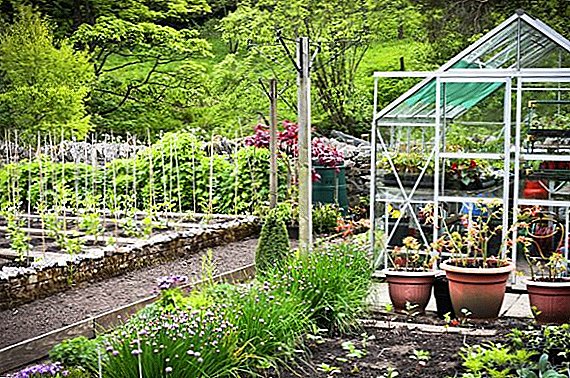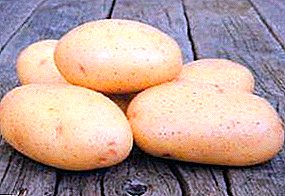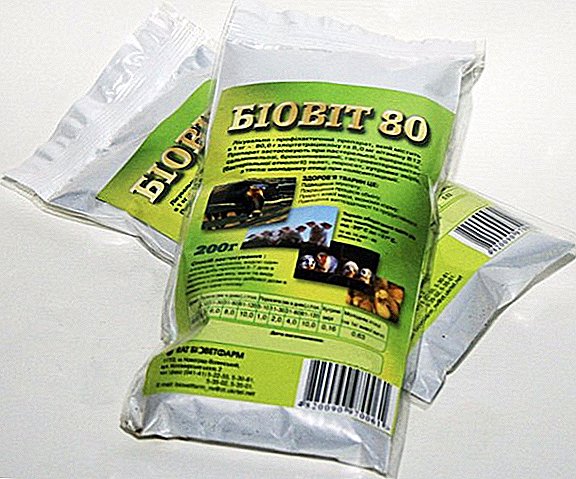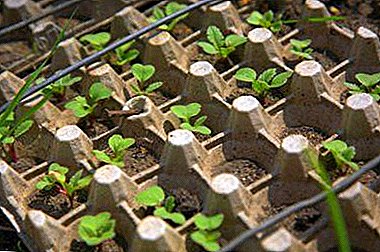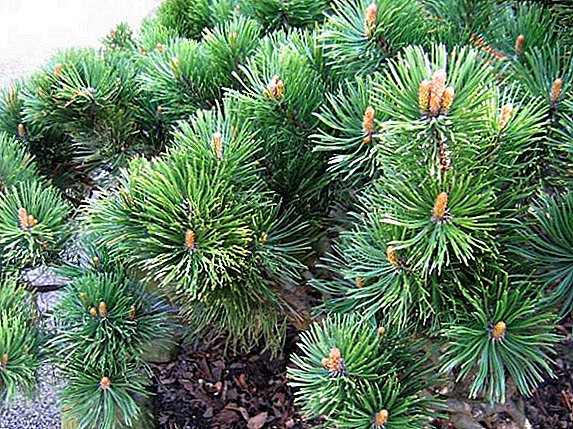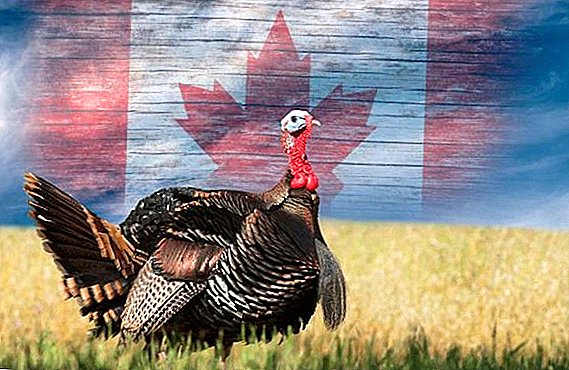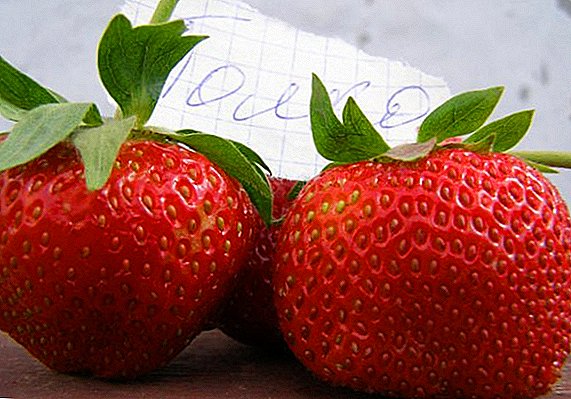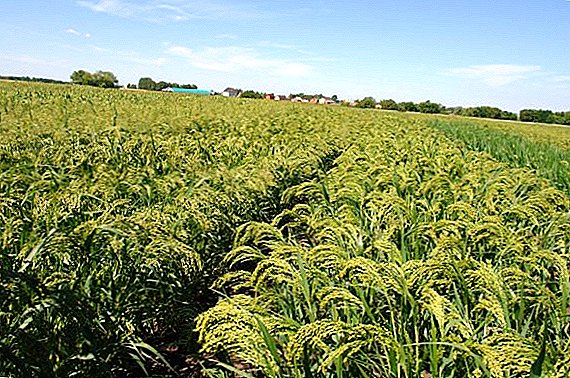 Far from everyone knows what millet is. Millet - This is a grain annual plant belonging to the family of cereals. Culture has cuff-shaped stems with a large number of nodes branching from the root. The inflorescence is paniculata, each spikelet has two flowers - bisexual and asexual.
Far from everyone knows what millet is. Millet - This is a grain annual plant belonging to the family of cereals. Culture has cuff-shaped stems with a large number of nodes branching from the root. The inflorescence is paniculata, each spikelet has two flowers - bisexual and asexual.
The ear of a plant is convex on one side, flattened on the other. The fruits of the plant is a grain of a round or oblong shape. Nowadays, the main cultivators of millet are China, India, less often - Ukraine, Russia, Kazakhstan.
Did you know? Millet is used as a safety seed. If planting winter crops for some reason did not survive, use millet.
Soil requirements
 The best option for growing millet is black soil or chestnut soil. In the conditions of germination on other soils, it is obligatory to apply special mineral fertilizers, since the roots of the culture do not assimilate useful substances.
The best option for growing millet is black soil or chestnut soil. In the conditions of germination on other soils, it is obligatory to apply special mineral fertilizers, since the roots of the culture do not assimilate useful substances.
Millet does not tolerate acidic soil, optimal for cultivation - neutral soil. Millet is demanding on the aeration properties of the land. On dense soils with high humidity sprouts die.
Good and bad predecessors
The cultivation of millet is best done on the ground after collecting legumes, clover, flax, grains or missing crops. It is undesirable to sow millet after spring grain, sunflower, Sudanese. Millet in crop rotation cannot be used as a monoculture, because there is a risk of fungal diseases.. Corn serves as an undesirable precursor, since it is also exposed to infection by a stem moth.
Important! The depth of penetration of millet roots is up to two meters. Therefore, it is advisable to cultivate it in drought-resistant areas.
Soil fertilizer for millet
To ensure maximum crop yield, nitrogen and phosphate fertilizers are introduced. Unlike other cultures millet, fertilized with nitrogenous fertilizers, instead of powerful green stems gives a high yield. Under the plowing, the ammonia-nitrogen fertilizers are applied. At the first cultivation fertilized with nitrate. Organics due to the growth of weeds are recommended to make when growing predecessors.
 Treatment of seedlings with micronutrients missing in the soil will be effective. At the beginning of the growing season, phosphorous substances are introduced to stimulate the growth of the root system. For the formation of one centner of grain, the rate of fertilizer consumption was adopted: nitrogen - 1.5 kg; phosphoric - 2.0-3.5 kg; potash - 1.0 kg.
Treatment of seedlings with micronutrients missing in the soil will be effective. At the beginning of the growing season, phosphorous substances are introduced to stimulate the growth of the root system. For the formation of one centner of grain, the rate of fertilizer consumption was adopted: nitrogen - 1.5 kg; phosphoric - 2.0-3.5 kg; potash - 1.0 kg.
Selection of varieties and preparation of seeds for sowing
Careful selection and full complex processing of seeds before sowing is a guarantee of a good harvest. There are over five hundred types of millet. When selecting seeds, it is necessary to take into account the characteristics and specificity of the growing conditions of a given crop: soil acidity, rainfall, soil fertility, weed infestation, seed germination, germination time, temperature.
Millet should be selected based on the prevalence in cultivation based on your geographic location. In Ukraine, there are about nineteen varieties of millet, of which Veselopodolyanskoe 176, Veselopodolyanskoe 16, Kievskoe 87, Omriyane, Mironovskoe 51, Kharkovskoe 31, Slobozhansky are popular.
To improve the germination and disinfection of millet seeds, preseeding disinfection is carried out. Seed treatment is done in advance (two weeks). For planting use seeds of І and ІІ class. To increase the germination energy, the seeds are ventilated in the air during the week, occasionally turning over.
 For disinfection, you can use drugs such as "Fenoram", "Baytan", "Vitavaks". Seeds are placed in advance prepared solution. It is advisable to add film-forming substances to the solution. Pop-up seeds are thrown away, and the rest are collected in a pile, covered with a cloth and held for two hours. After this procedure, the seeds are ventilated again.
For disinfection, you can use drugs such as "Fenoram", "Baytan", "Vitavaks". Seeds are placed in advance prepared solution. It is advisable to add film-forming substances to the solution. Pop-up seeds are thrown away, and the rest are collected in a pile, covered with a cloth and held for two hours. After this procedure, the seeds are ventilated again.
Did you know? The homeland of millet is China. There, they began to cultivate it in the 3rd millennium BC.
Optimum dates for sowing millet
Each farmer decides for himself when to sow millet. When sowing millet in the winter, snow retention is carried out in the fields and snow thawing is regulated.
Sowing millet in spring carried out when the soil at a depth of seeding 4-5 cm warmed to 10-12 ºC. If you sow the seeds early, the seedlings appear belatedly and the field becomes overgrown with weeds, and the shoots can freeze when the frosts spring.
 In case of late seeding due to the drying out of the soil, seed germination will be uneven and the root system will not root well. Millet is sown at the end of April and ends in mid-June. When sowing a crop on a green mass, sowing ends in July.
In case of late seeding due to the drying out of the soil, seed germination will be uneven and the root system will not root well. Millet is sown at the end of April and ends in mid-June. When sowing a crop on a green mass, sowing ends in July.
There is an ultra-early variety of millet, which is used to produce a second crop. It is sown after harvesting winter crops and annuals at the end of July.
Methods of sowing millet
The agrotechnology of sowing millet directly depends on the fertility and contamination of the land for cultivation. If the soil for millet is highly fertile, with moderate humidity and clear of weeds, use line seeding millet.
 In weedy areas with a small amount of moisture in the soil is used wide-row and single-row (distance between rows of 45 centimeters) method. Sowing scheme with belt method 65x15x15. At the same time, the seeding rate per 1 hectare of the line method is 3.0-4.0 million seeds (20-30 kg), wide-row - 2.5 million seeds (17-18 kg).
In weedy areas with a small amount of moisture in the soil is used wide-row and single-row (distance between rows of 45 centimeters) method. Sowing scheme with belt method 65x15x15. At the same time, the seeding rate per 1 hectare of the line method is 3.0-4.0 million seeds (20-30 kg), wide-row - 2.5 million seeds (17-18 kg).
Farmer experience has shown that in order to obtain the maximum yield, the line method of planting millet is acceptable. When cultivating with the wide-row method, millet does not yield such a yield, it should be used for seed production.
Important! The time gap between the preparation of the soil for sowing and seeding should be minimal so that moisture does not evaporate.
Care for millet crops
The care of the crops of this grain crop is in post-planting rolling and pre-emergence harrowing of seedlings. Postseed rolling perform ringed and ball-ringed rollers. Rolling grain in arid areas is used for greater contact of seeds with the ground, which contributes to their swelling and increased germination.
For harrowing use light mesh, sowing, tine harrows. The goal is to fluff the resulting soil crust and to undermine the sprouts of weeds. Harrowing is carried out at a height of lesser seeding depth in order not to damage the millet, when the height of the seedling is equal to the height of the grain. Boron across the sowing rows at a speed of 5 km / h.
The second time crops are harrowed when the plant begins to thrive. If harrowing is required during the seed phase, it is carried out with rotary hoes.
Weed control and pest and disease protection
2-3 row cultivations are carried out on wide-row and belt sowing. The first treatment is carried out on the deepening of 4 cm, when the seeds are fully grown, the subsequent deeper by 2 cm.
 When bobbing millet stems need to pile up to strengthen the root system of crops. Agrotechnical methods are combined with chemical methods for effective weed control. In order to eliminate annual weeds used herbicide application when cultivating the soil for sowing. Growing millet is a time-consuming, time-consuming process.
When bobbing millet stems need to pile up to strengthen the root system of crops. Agrotechnical methods are combined with chemical methods for effective weed control. In order to eliminate annual weeds used herbicide application when cultivating the soil for sowing. Growing millet is a time-consuming, time-consuming process.
The key to success in protecting millet from diseases (melanosis, smut) and pests (thrips, aphid, millet mosquito, stem moth) is timely agrotechnical (proper crop rotation, soil incorporation, weed control, seed treatment) and chemical treatment. It is necessary to resort to spraying millet fields with chemicals, if pests or diseases can cause great economic damage.
Did you know? Millet is rich in natural protein, which, unlike meat, does not acidify and does not poison the body with unsaturated fatty acids.
Millet harvesting
The final step in growing millet is harvesting. Millet matures unevenly, so its cleaning is carried out in a separate way. A sign of ripeness of grain is the yellowing of the scales of scales. Bevel beginwhen about 80% of the crop is ripened, the millet in the upper tier of the inflorescence is fully ripe, the middle of the inflorescence has ripened, and the bottom is not ripe.
In order not to lose an immature crop, millet is mowed down in such a way that its lower tier ripens in rolls. When mowing the stubble is left 20 cm high, the rolls are folded across the rows. Pick and thresh grain harvesters in five days, when its humidity reaches 14%. Ready grain is stored in the conditions of humidity no more than 13%. 
Important! When removing millet, be sure to control the cutting height of the stems, the quality of the threshing panicle, the integrity and purity of the grain.


